#Prologue to Ursula K. le Guin
Text
In the 1960s, Ursula K. le Guin represented a changing of the guard in science fiction literature. She was part of a generation of novelists who questioned the colonist mindset which had influenced American sci-fi for most of the 20th century. Le Guin came to this understanding not just as a moral stance or an intellectual exercise. Issues of racism and colonialism were personal to her. This episode, originally titled "The Word For Man Is Ishi,” comes from the podcast The Last Archive from Pushkin Industries hosted by Jill Lepore and Ben Naddaff-Hafrey.
#Prologue to Ursula K. le Guin#podcast#podcasts#science fiction#imaginary worlds#The Last Archive#anthropology#genocide#books and libraries#books and reading#books and literature#museums#california#colonialism#colonization#ishi#indigenous#native american
81 notes
·
View notes
Note
Hi I really like your blog and your writing. I havent really read anything substantial outside of stuff for school and literature kind of intimidates me but I want to get into Classics and plays and the stuff you talk about here.
Do you have any recommendations for starting places build some literary brain muscle?
Hello! First of all: THANK YOU! What an honor not only to have someone admire my taste, but to inspire the desire for self-growth and engagement with literature! And yes, I absolutely do have some recommendations :)
Plays: So I actually have an entire page on my blog dedicated to play recommendations! I need to update it and add a few things, but the top section is a list of all my favorite plays with summaries provided by moi. Best place to start is to just read those summaries and see what sparks your interest!
Literature: I’m going to keep this to my favorite fiction and poetry since that seems like what you’re after, but I’m also happy to give nonfiction and essay recs in the future if you’d like.
Books (in no particular order)
Jane Austen - Pride & Prejudice, Emma, Persuasion
Virginia Woolf - Mrs Dalloway, To the Lighthouse
Toni Morrison - Beloved, Recitatif (short story)
Monique Truong - Book of Salt
Pierre Choderlos de Laclos - Les Liaisons Dangereuses (Dangerous Liaisons)
James Baldwin - Giovanni’s Room
Ursula K Le Guin - The Dispossessed (my favorite book of all time), The Left Hand of Darkness, the Earthsea books
Ralph Ellison - Invisible Man
Franz Kafka - The Metamorphosis, A Report to an Academy (short stories)
Poetry:
Emily Dickinson. If you want specific poem recs that’s an entire post on its own
Open Me Carefully: Emily Dickinson’s Intimate Letters to Sue Huntington (composed of letters and poems so I put it here)
Audre Lorde. Everything but some favorites include The Workers Rose On May Day, Equinox, The Day They Eulogized Mahalia, Prologue, Change of Season, New Year’s Day, One Year To Life On The Grand Central Shuttle, Suspension, The Bees, and Memorial IV
Byron - Prometheus, Darkness, When We Two Parted
Claude McKay - Harlem Shadows (book)
Laura Gilpin - The Hocus-Pocus of the Universe (book)
Mary Oliver - Devotions (book, selection)
John Keats - When I Have Fears, Ode on a Grecian Urn, Ode to a Nightingale
William Blake - Songs of Innocence and of Experience (book), London
#anon#asks#literature#poetry#recs#I need to add tiny beautiful things. pipeline and Medea to my plays list lol#also like#I am not much farther ahead than you I only started regularly reading serious literature like 3 years ago#I have a lotttt left to go I’m working on building my own literary foundation
10 notes
·
View notes
Photo
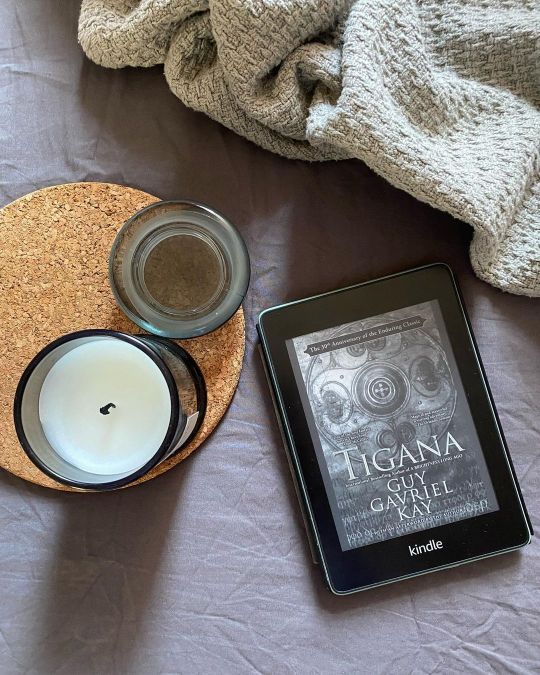
❓What are the books you are going to read soon?
I'm a chaotic reader. I have my TBR. I even have a TBR sublist where I place top priority books. But something always happens and I start reading some random book.
For example, I noticed I need to read the 'Award Finalist' category book for my SFF bingo to close the first column(YEAH!!!), so I just started reading The Bear and The Nightingale.
So I think that the #sixbookssoon challenge can be useful for me, as a reminder and motivation. @dark.shelf.of.wonders , thank you for the tag!
Here are 6 books I'm going to read soon:
• Tigana by Guy Gavriel Kay. I really want to read it, it's been on my top-TBR for ages. I even read the prologue and it was so poetic and beautifully written. I postponed it because I know I'll read it slowly and it will be the center of my focus for some time. And I have a lot of other books I want to mix and read.
• A Wizard of Earthsea by Ursula K. Le Guin. It's a classic of fantasy I still haven't read. I bought it in February, but then always found some other books to read. It's definitely time to change it.
• Midnight Tides (Malazan #5) by Steven Erikson. I stopped reading Malazan after House of Chains in March because it's a hard read for me, it usually leaves me partly devastated. And the themes it explores were too real and painful at that moment. I spent last months reading more light books, but I know there will be time soon to return to this amazing world.
• The City of Brass by S.A. Chakraborty. It's intriguing, it's popular, it's highly recommended. I want to read it and that's all.
• Swordheart by T. Kingfisher. I'm continuing my quest of reading all T.Kingfisher's books and nothing can make me happier. Well, maybe a new Sanderson's book?
• Us Against You by Fredrik Backman. Beartown was an impressive and thought-provoking read. This year we'll get a final book in this series, so I need to be ready.
🤍I tagged some of you, if you want to share your TBR, I'll be happy to see it. https://www.instagram.com/p/CgRucWMo8Vt/?igshid=NGJjMDIxMWI=
#books#book#kindle books#booklr#bookblr#fantasy#fantasy books#tigana#malazan#swordheart#beartown#the city of brass#guy gavriel kay#steven erikson#s.a. chakraborty#t. kingfisher#fredrik backman
3 notes
·
View notes
Text
for all those who think 'magic is actually advanced technology' is a bad trope, please read the prologue of Rocannon's World by Ursula K. Le Guin
#just finished the book and like always it was fantastic#anthroplogical sci fi can be so good#rocannon's world#ursula k. le guin
64 notes
·
View notes
Text
TerraMythos' 2020 Reading Challenge - Book 27 of 26

Title: How Long ‘Til Black Future Month? (2018)
Author: N. K. Jemisin
Genre/Tags: Short Story Collection, Fantasy, Science Fiction, Horror, Dystopia, Magical Realism, Steampunk, Cyberpunk, Post-Apocalyptic, Female Protagonist(s), LGBT Protagonist(s).
Rating: 8/10 (Note: This is an average of all the stories -- see below the cut for individual story blurbs/ratings).
Date Began: 9/27/2020
Date Finished: 10/4/2020
I really liked this collection! Jemisin wrote my favorite fanstasy/scifi series ever with The Broken Earth trilogy, and I really enjoyed her recent novel The City We Became. I was in the mindset for shorter fiction so decided to read this collection of short stories. Of these 22 stories, my absolute favorites (9/10 or higher) were:
The City Born Great - 10/10
The Effluent Engine - 9/10
Cloud Dragon Skies - 9/10
The Trojan Girl -10/10
Valedictorian - 9/10
The Evaluators - 10/10
Stone Hunger - 9/10
The Narcomancer - 9/10
Too Many Yesterdays, Not Enough Tomorrows - 9/10
Sinners, Saints, Dragons, and Haints, in the City Beneath the Still Waters - 9/10
A more detailed summary/reaction to each story under the cut. WARNING: IT’S LONG.
1. Those Who Stay and Fight - 8/10
Describes a utopia called Um-Helat that exists solely because no one is seen as superior or inferior to anyone else. Over time we learn it's a future, or potential future, of America. But America today is pure anathema to it due to rampant structural inequality. In order to achieve its utopian ideal, Um-Helatians have to root out and destroy people corrupted by the past.
This story was apparently written as a tribute/response to the Ursula K. Le Guin story “The Ones Who Walk Away from Omelas”. I first read this without context, then went and read the Le Guin story. I definitely see the parallels. Both feature a narrator describing a wonderful utopia in the midst of festival, trying to convince the reader of the place's existence, before introducing something dark that is the price of the utopia. In the Le Guin story, the utopia exists at the price of the horrible misery and suffering of one child, and everyone is aware of it. Most live with it, but a few leave for the unknown rather than continue to live there (hence the title). In Jemisin's story, the price is instead the annihilation of those tainted by exposure to the evils of the past. The choice, instead of leaving, is for those tainted yet capable to become protectors of the new world, or die.
The thesis is pretty clear: that only by abandoning horrible ideologies and refusing to give them any ground or quarter can a utopian society truly exist. I will say that rings clear, especially when one considers Naziism and fascism. Not all ideologies deserve the light of day or debate, and even entertaining them as valid allows it to take hold. I liked this story, though it comes off as a social justice essay more than a story in and of itself.
2. The City Born Great - 10/10
This one is told from the perspective of a homeless young black man who feels a strange resonance with New York City. He meets a mysterious figure named Paulo, who tells him the city is about to be born as a full-fledged entity, and the man has been chosen to assist with its birth. However, there’s an eldritch force known simply as The Enemy that seeks to prevent this from happening.
I've read this one before since it's the prologue to The City We Became. And honestly it was one of my favorite parts of that book. New York City is a phenomenal character. I love that the proto-avatar of NYC is a young homeless black man, one of the most denigrated groups out there. Cops being the harbingers of eldritch destruction is... yeah. It was fun to reread this. The ending is a little different, because in the novel, something goes terribly wrong that doesn't happen in this short story. There is also a flash forward where he is, apparently, about to awaken the avatar of Los Angeles. Makes me wonder if that is ultimately the endgame of the series. But otherwise it's the same thing with absolutely phenomenal character voice and creativity regarding cities as living creatures. I'm glad Jemisin expanded this idea into a full series.
3. Red Dirt Witch - 7/10
Takes place before the (1960s) Civil Rights Movement in Pratt City, AL. The main character is Emmaline, a witch with three kids. A creepy figure called The White Lady comes to visit and steal one of her children.
I love the little twist that The White Lady is a faerie. And the different take on rowan/ash/thorn instead being rosemary/sage/sycamore fig. There is a lot of touching bits about the horrible trials and human rights abuses during the Civil Rights marches (which are unfortunately all too relevant still), but ultimately a hopeful glimpse of the future of black people in America, though hard-won.
4. L'Alchimista - 6/10
Stars a Milanese master chef named Franca, who fell from glory for Reasons, who now works as head chef at a run-down inn. She feeds a mysterious stranger, who then challenges her to fix a seemingly impossible recipe.
This one was fun and charming. I thought the food (and magical food) descriptions were very vibrant and interesting, especially the last meal. I can tell this is an earlier story and it's pretty light hearted, but I enjoyed it. It felt like it needed a little more of.. something.
5. The Effluent Engine - 9/10
In an interesting steampunk take, Haitian spy Jessaline comes to the city of New Orleans to meet one of its foremost scientists. Her goal is to find a viable, unique energy source to strengthen Haiti in a world that wants to see her nation dead.
I really liked this; it's one of the longer stories so there's more time for character development and worldbuilding. And it's gay. I'm not hugely into pure steampunk because a lot of it comes off as very... samey (hyper Eurocentric/Victorian, etc) but I thought this take was fresh.
Like much of Jemisin's work, there is a lot of racial under and overtones; this one specifically goes into the terrible atrocities committed against the Haitians during their Revolution, and the varied social classes of black/Creole people in New Orleans at the time. A lot of this is stuff I was unaware of or knew very little about. I thought it was interesting to bring all of these to the forefront in a steampunk story in addition to the dirigibles, clockwork, action, and subterfuge. Also, everything tries together in a very satisfying way by the end (the rum bottle!), which I love in short fiction.
6. Cloud Dragon Skies - 9/10
Takes place in a post-apoc future where some humans evacuated to space while others stayed behind and took on more indigenous traditions to heal the Earth. The sky has suddenly turned red on Earth, and some representatives from the "sky-people" come to study it and figure out why.
I really enjoyed this little story; fantasy/scifi fusions are my jam, but science fiction specifically told through a fantasy lens is just so cool to me. The cloud dragons were very interesting and imaginative. Also, I love how the opening statement's meaning isn't particularly clear until you read the whole thing.
7. The Trojan Girl - 10/10
This one is about sentient computer programs/viruses that struggle to survive in something called the Amorph, which is basically a more advanced, omnipresent version of the Internet.
Holy fucking shit was this a cool story. Probably the coolest take on cyberpunk I've ever read. The main character Moroe has formed a messed up little family of creatures like him who live and hunt in Amorph's code, but can upload to "the Static" (real life) if needed by hijacking human hosts. The way this is described is so damn creepy and unsettling. I love that while they're anthropomorphized, the characters are mostly feral and compared to a pack of wolves. Soooo much wolf pack imagery. And the ending is so fucking good and imaginative.
This was apparently a proof of concept story that Jemisin decided not to adapt to a longer series, which I'm kind of sad about, but it was REALLY cool nevertheless. The next story is apparently in the same universe and serves as the "conclusion".
8. Valedictorian - 9/10
This one is about a girl who is, well, top of her class in high school, and the stresses that mount as graduation approaches. But while it seems like a familiar setup, there is something decidedly Off about everything, which is revealed gradually over the course of the story.
I originally gave this an 8, but honestly I couldn't stop thinking about it so I boosted it to a 9. It doesn’t become clear how this connects to the previous story until the midpoint. I liked this one because it functions as a nice dystopian science fiction story but also biting social commentary on the modern American education system. I'm not going go say more on it because spoilers. While I personally like the first story more I think this is an interesting followup/conclusion with a more cerebral approach.
9. The Storyteller's Replacement - 6/10
This one's presented as a traditional "once upon a time" fable told by a storyteller narrator, about a shitty despotic king named Paramenter. Desperate to prove his virility, he eats the heart of a dragon, which is said to be a cure-all for impotence. It's successful, but the six strange daughters that result seem to have plans of their own.
Not really my cup of tea-- it's pretty fucked up. But it's definitely cathartic by the end, which I appreciate, and I do like how creepy the daughters are.
10. The Brides of Heaven - 5/10
Framed as an interrogation in an offworld colony called Illiyin, in which a terrible accident occurred on the way that left all the adult men dead. Dihya, who lost her only son to an alien parasite, is caught trying to sabotage the colony's water supply for reasons unknown.
I like some things in this story. I love the trope of alien biology affecting human biology in unexpected ways. I'm not terribly familiar with Islam but thought it added an interesting faith vs practicality vs tradition element to the science fiction. However I found the sexual body horror REALLY squicky which turned me off the story as a whole.
11. The Evaluators - 10/10
Stylized as a collection of logs and excerpts from a First Contact team of humans visiting and studying a sapient alien species to potentially set up trade relations. There's a focus on one team member named Aihua and her conversations with one of the aliens, but there's miscellaneous important hints/excerpts from the survey that hint Something Creepy Is Going On.
This one was BIZARRE and took me two reads to fully appreciate, but it’s a great work of nontraditional science fiction horror. Just... the epitome of "*nervous laughter* 'what the fuck'". I can't say more without spoiling but dear lord. That whole Jesus bit hits different on a second read. Fucking hell.
12. Walking Awake - 7/10
Takes place in a dystopian society in which parasitic creatures known as Masters keep a small number of humans alive to be flesh suits for them, which they take over and trade around at will. The main character Sadie is a human "caretaker" responsible for propagandizing and raising well-bred human children that eventually become the Masters' hosts. She starts to have disturbing dreams when one takes over the body of a teenage boy she was particularly attached to.
This is apparently a response to Robert Heinlein's The Puppet Masters, which I have never read. It's a full damn novel so I probably won't. Google tells me it's about parasitic aliens, but was obviously also Red Scare paranoia about communist Russia. The argument in the Jemisin story is that the parasites are a result of human folly in an attempt to punish/control people their creators didn't like. This went poorly and resulted in the whole world being taken over.
The story itself is disturbing since the victims are innocent children, but it's ultimately about standing up and taking the first step toward revolution. I felt pretty neutral about the story itself; perhaps I would have liked it more if it was longer and I had more time with the world and protagonist. I wanted to connect to Sadie and her maternal relationship the boy who got killed more. Or maybe it's more impactful if you're familiar with the Heinlein novel and can see the nods/digs.
13. The Elevator Dancer - 7/10
A very short story that takes place in a Christian fundamentalist surveillance state. The protagonist is an unnamed security guard who occasionally sees a woman dancing alone in the elevator and obsesses over her.
I like this one but I'm not sure if I really get it. It's heavily implied the dancer is a hallucination, and the narrator gets "re-educated" but it's all a little ambiguous. I think it's about the struggle to find meaning and inspiration in an oppressive world.
14. Cuisine des Mémoires - 8/10
This one's about a man named Harold who visits a strange restaurant that claims it can replicate any meal from any point in history. He orders a meal which his ex-wife, whom he still loves very much, fixed for him years ago.
This one was certainly different, but I really like the idea of food-as-memory, especially because that's an actual thing. This story just takes it to an extra level. Honestly this story made me feel things... the longing of memory and missed connections/opportunities. Jemisin did a great job with emotion on this one.
15. Stone Hunger - 9/10
Stars a girl in with the ability to manipulate the earth who's tracking down a man she senses in an unfamiliar city. It's heavily implied the world is in a perpetual post-apocalyptic state. When she's caught damaging the outer wall of the city to break in and injured/imprisoned, she's aided by a mysterious, humanoid statue creature with motives of its own.
I have to say it's really interesting to see an early beta concept of The Broken Earth. Orogeny is a little different (and not named)-- there's some kind of taste component to it? Though that's possibly unique to the main character? While hatred of orogenes exists I don't think it's a structural exploitation allegory at this point. Ykka + proto-Castrima existing this early is pretty funny to me. People also use metal, which is VERY funny if you’ve read the series. But I was thrilled to see stone eaters were Very Much A Thing this early and almost exactly how they appear in the series (a little more sinister I guess. At least the one in this story is. I think he basically gets integrated into the Steel/Gray character in the final version).
Anyway as a huge fan of The Broken Earth it's inspiring to see these early ideas and just how much got changed. It's hard for me to look at this as an independent story without the context of the series. I think I'd like it due to the creative setting and strange concepts, but I appreciate the final changes to narrative style and worldbuilding, which really made the series for me.
16. On The Banks of the River Lex - 8/10
Death explores a decaying, post-human version of New York City. He and various deities/ideas created by humans are all that survives in the future and they struggle to exist in the crumbling infrastructure of the city. But Death gradually observes new and different creatures developing amid the wreckage.
I liked this! Despite a typically bleak premise the story is very optimistic and hopeful for the future of the world post-humanity. I like anthropomorphized concepts/deities/etc in general. I thought the imagery of decay and life was gorgeous. Also octopuses are cool.
17. The Narcomancer - 9/10
Told from the perspective of Cet, a priest known as a Gatherer, who can take the life of someone through their dreams in order to bring them peace. When a village petitions his order to investigate a series of raids conducted by brigands using forbidden magic, Cet joins the party. However, he is troubled by his growing attraction to a strong-willed woman of the village.
This apparently takes place in the Dreamblood universe, which I have not read and know nothing about. However, I really enjoyed this story. It's the longest in the collection so I felt I really got to know the characters. The dream-based religion and fantasy was captivating to learn about. It was also romantic as hell, but not in the typical way you’d expect. I thought the central conflict of a priest struggling between an oath of celibacy and his duty to do the right thing (bring peace to someone who needs it) was fascinating.
18. Henosis - 4/10
A short piece, told anachronistically, about a lauded, award winning author on the way to an award ceremony. He gets kidnapped, but there's Something Else going on.
Honestly I get the sense this one is personal, lol. I will say I like the disturbing play on expectations, but I didn't connect much with it otherwise.
19. Too Many Yesterdays, Not Enough Tomorrows - 9/10
Follows a group of bloggers who have found themselves caught in isolated quantum loops. Their only human contact is through tenuous online conversations with each other. Styled as various chat logs and emails interspersed with the thoughts and perspectives of Helen, a young black woman who before the loop was teaching English in Japan.
This one is real depressing and definitely Social Commentary (TM). The central thesis about loneliness and disconnect at the end made me pretty dang sad. Good stuff in an ouch kind of way and made me think.
20. The You Train - 6/10
Told from the perspective of an unnamed narrator talking (presumably on the phone) to a friend about her struggles adjusting to life in New York City. She regularly mentions seeing train lines that either don't exist or retired a long time ago.
This is the kind of story I'd normally really like. I think trains are interesting and like vaguely supernatural, inexplicable shit. The one-sided phone call is also an interesting narrative device. But I'm not sure I really got this one. It comes off as vaguely horror-y but also optimistic? I couldn't really figure this one out, and it was too short to feel much investment on top of that.
21. Non-Zero Probabilities - 7/10
Luck has gone completely out of whack in New York City. Highly improbable events suddenly become way more likely, both good and bad. This story follows a woman named Adele and coming to grips with the new ways of life this brings.
I liked this one well enough but I don't have a lot to say about it. I liked how the story looks at how people would adapt to a life where probability doesn't mean anything anymore.
22. Sinners, Saints, Dragons, and Haints, in the City Beneath the Still Waters - 9/10
A magical realism story about a man named Tookie struggling to survive in New Orleans in the immediate aftermath of Hurricane Katrina. He meets a talking, winged lizard and the two help each other out. But it soon becomes clear there is something sinister lurking in the flooded ruins of the city.
This story was very imaginative and a great cap to the collection. I thought it was an intriguing time period to set a magical realism story in. I love the little details, especially those of omission -- the "lizard" is never called a dragon, for example. I can see echoes of this story in The City We Became, especially the themes of cities as powerful entities, vague eldritch fuckery centered around hatred, and certain people being guardians of the city.
#2020 reading challenge#BONUS ROUND#taylor reads#8/10#i am posting this Late but i was basically writing this review as i read so it's like. all done lol
9 notes
·
View notes
Text
7 impactantes teorías de los fans sobre BTS, que en realidad podrían ser ciertas.
¿Finalmente ARMY lo ha descubierto?
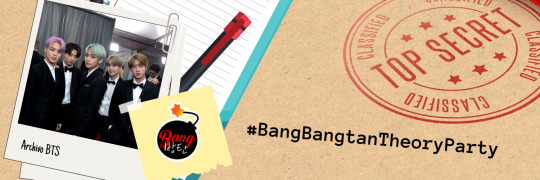
Los Fans de BTS tienen un interminable suministro de teorías retorcidas que cambian a cada momento y que se vuelven más complejas cada vez que BTS hace su regreso. Big Hit Entertainment adora mantener a los fanáticos adivinando, pero estas teorías son tan locas que, en realidad, podrían ser ciertas.
1. El efecto mariposa y Jin como viajero del tiempo.

En la teoría del caos, el efecto mariposa se refiere a un fenómeno donde el cambio más pequeño tiene un efecto dominó que puede causar grandes efectos en otros lugares.
De acuerdo a la teoría, una mariposa agitando sus alas podría causar un tifón. Un pequeño cambio puede cambiar el universo entero, para mejor o para peor.
Las mariposas son un recurrentes en BTS y pueden estar vinculados a esta teoría. De hecho, una tarjeta de mariposa aparece en el video musical de “Run”.
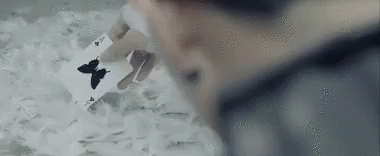
…En el vídeo de “On Stage: Prologue”, V parece imitar a la tarjeta cuando está acostado sobre el colchón. RM es el primero en acercarse a V y RM es también quien recogió la tarjeta de mariposa.
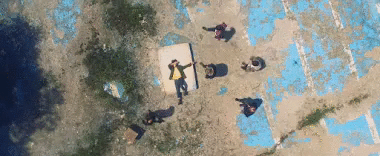
En el vídeo musical de “I Need U” se presentó la trama individual de cada miembro.

Los vídeos musicales posteriores reinventaron la situación de cada uno de diferentes maneras, apoyando la idea de que el más mínimo cambio en el presente puede alterar el futuro.
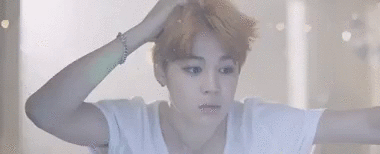
De “I Need U” en adelante, todas las tramas han estado vinculadas a Jin, llevando a muchos a creer que él es un viajero del tiempo; él es quien ha estado tratando una y otra vez de cambiar el destino de sus miembros.

En el vídeo de “Euphoria”, Jin parece finalmente haber tenido éxito. En “On Stage: Prologue” V fue el único que saltó al agua...
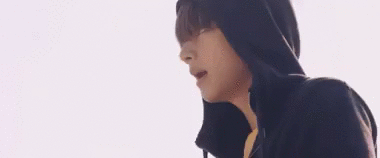
...pero en el vídeo de “Euphoria” Jin saltó en su lugar. Esto sugiere que él ha cambiado o intercambiado sus destinos.

“Fake Love”, sin embargo, implica que el destino no puede ser cambiado después de todo. Jin, quien fue el encargado de cambiar sus destinos, se encuentra encerrado solo en una habitación, al igual que los otros miembros.

Cuando Jin intercambió lugares con V, parece que su papel de viajero del tiempo / cambiador de destino fue pasado a Jungkook, continuando así su interminable ciclo.
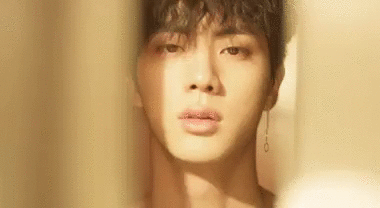
A lo largo del vídeo, Jungkook corre a través del edificio pero, como Jin, es incapaz de salvar a sus miembros.
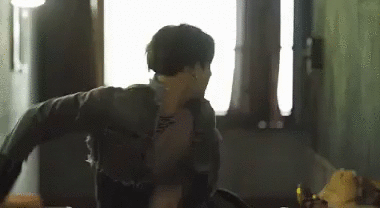
2. La Flor de Esmeraldo
Los fans tienen la enorme sospecha de que la flor de Esmeraldo está intrincadamente enlazada a BTS. La flor, la cual no existe en la realidad, fue descubierta el 12 de Junio de 2013, el mismo día del debut de BTS.

El 9 de Agosto de 2019, Jin agregó fuerza a ésta teoría cuando posteó una foto de él sosteniendo un ramo de flores, en la cual escribió “Esmeraldo”.
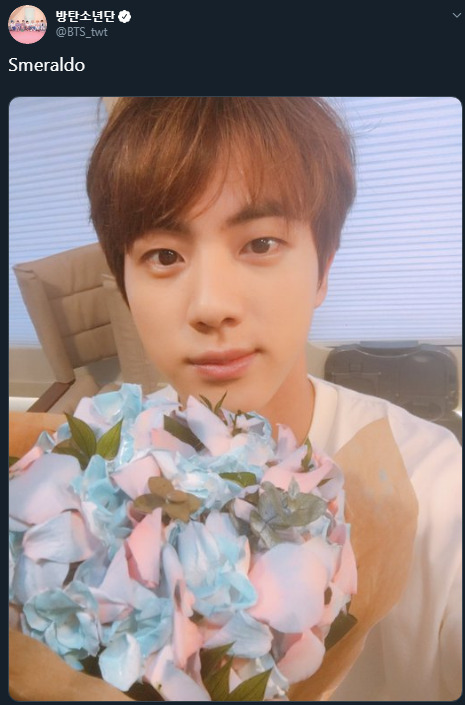
Un jarrón, con estas flores en su interior, hicieron una breve aparición en el vídeo musical de “Run”, 2 años antes de la publicación de Jin.
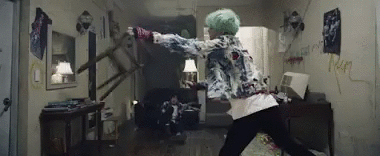
Los fans estuvieron impactados al ver la flor una vez más, casi un año después de la publicación de Jin, cuando BTS publicó su vídeo musical “Singularity”. En este, V pudo ser visto sosteniendo lo que se parece mucho a una flor de Esmeraldo.
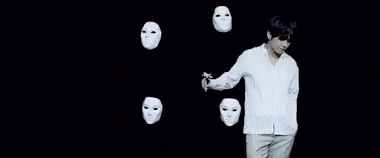
Estas flores no existen en la naturaleza, pero pueden ser creadas pintando con aerosol flores blancas de azul. La letra de “The Truth Untold” menciona una “flor azul” que “floreció en un jardín de soledad”.
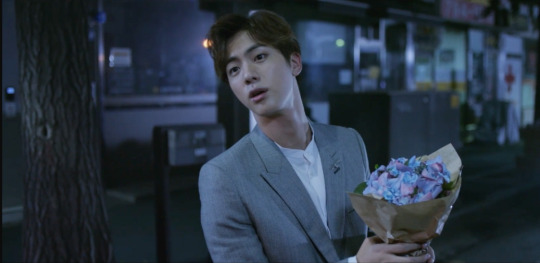
En el lenguaje de flores, “Esmeraldo” significa “La sinceridad que no pudo ser entregada” o “La verdad que no puede decirse”. Este sentimiento se expresa fuertemente en “The Truth Untold” (La verdad no contada).
Esta flor también hace una aparición dentro de la linterna de Jin, durante el vídeo musical de “Fake Love”.
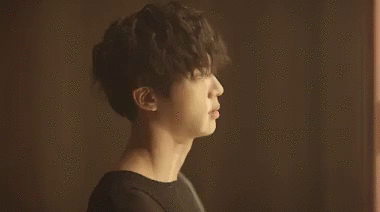
3. Todo es una mentira
Algunos fans han teorizado que todo lo que hemos visto en los videos musicales del universo de BTS podría ser falso.

Esta teoría nace a partir del teaser de “Fake Love” como base para el análisis sugieren que varios de los objetos vistos en el teaser representan “temores”. Los artículos que BTS recibió a cambio de estos “temores” son recuerdos que representan felicidad.
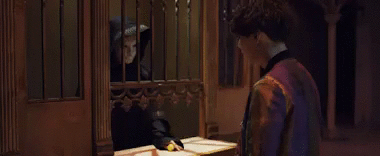
“La tienda mágica (Magic Shop) es una técnica psicodramática que intercambia un “temor” por una actitud positiva”. Esta cita aparece al comienzo del teaser de “Fake Love”.
Sin embargo, estos recuerdos que fueron vistos en “Highlight Reel” de BTS, no son recuerdos en absoluto, son producto de la imaginación de cada miembro.

4. Jungkook es el chico en Omelas
Los Fans han especulado que existe una conexión entre “Fake Love” y la historia de Ursula K. Le Guin, titulada “The Ones Who Walk Away from Omelas” (Los que se alejan de Omelas).
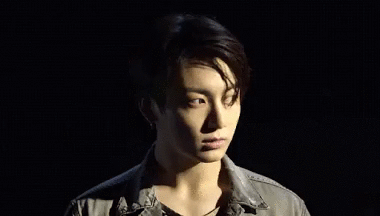
En la historia, un chico que está encerrado en el sótano de Omelas, un pueblo, debe sacrificar su propia felicidad por el bien de la felicidad del pueblo.

Los Fans creen que en la historia de “Fake Love”, Jungkook debe sacrificar su propia felicidad por la felicidad de sus miembros o de lo contrario todos continuarán su ciclo de sufrimiento interminable.
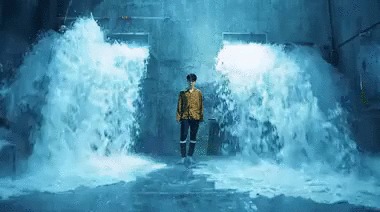
5. V es la mente maestra
¿Podría V ser el titiritero que controla las cuerdas de Jin? ¡Algunos fans piensan que sí!

Esta teoría retrocede al video musical de “Blood, Sweat & Tears”, donde V interpretó a un ángel caído.

Durante todo el vídeo musical, V se ve acostado debajo de un velo. El interior oscuro de V se revela una vez que se levanta el velo.

Esto pasa al mismo tiempo que Jin besa a la estatua del ángel con alas oscuras.
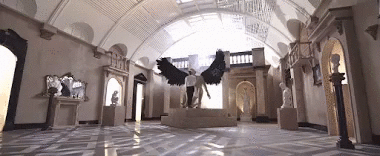
V esconde su verdadero “Yo” detrás de un velo, luego lo esconde una vez más en “Singularity”, cuando se coloca la máscara. Esto ha hecho que algunas fans teoricen que su personaje puede tener motivos ocultos, tal vez, motivos siniestros.
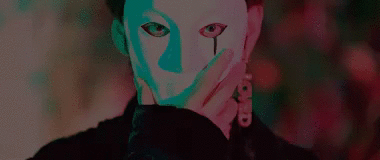
6. La figura misteriosa
Muchos fans creen que la figura enmascarada en “Fake Love” puede ser la misma figura encapuchada de “Fire”. Esto podría explicar el por qué las historias de Suga y Jungkook están tan fuertemente vinculadas.

Cuando Suga estrechó la mano de la figura encapuchada en “Fire”, esto pudo haber indicado un acuerdo de venta de almas que selló el ardiente destino de Suga.
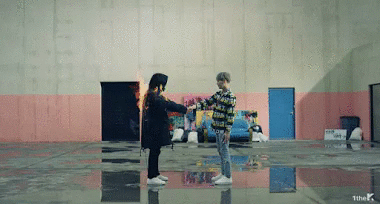
En toda la serie, Jungkook trata de salvar a Suga…
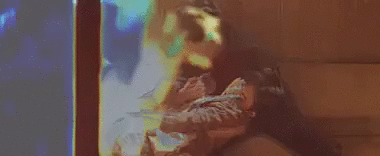
…Pero Finalmente Falla.
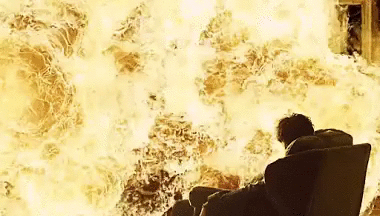
Quizás, al final de “Fake Love”, Jungkook está a punto de hacer su propio acuerdo con la figura enmascarada que negará la original de Suga.
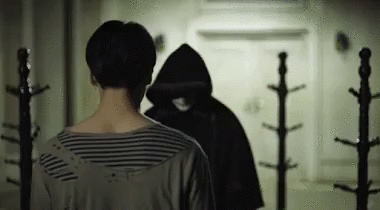
7. La figura misteriosa – Parte 2
¡Giro de la trama!, ¡La versión extendida del video musical de “Fake Love” de BTS ha sacado a relucir muchas de las teorías anteriores de ésta lista!

Al final de éste video, Jungkook sale encapuchado del edificio.
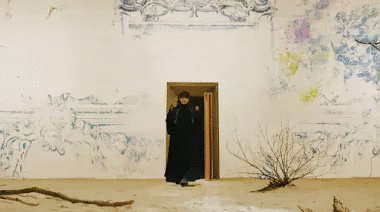
Cuando él se coloca la máscara, se revela que él es la figura encapuchada del video original de “Fake Love”.

Los percheros en el video estaban desnudos porque las diferentes versiones de los otros seis miembros de BTS están usando las capas.

¡BTS conoció las versiones enmascaradas de ellos mismos en la tienda mágica!

Con un final culminante como éste, es imposible saber donde estará BTS a partir de ahora.
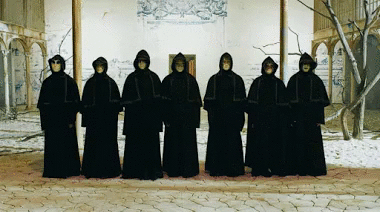
¿Tienes alguna teoría?
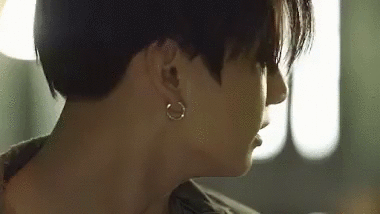
Yooni🍃 @ bangbangtan
Crédito @ Koreaboo
Foto AnzuuEo @ Nochumon
Compatir con creditos
79 notes
·
View notes
Text
SYNOPSIS OF ANTIGONE [EN]
Antigone is a Greek play written in around 442 BC by Sophocles, one of the three great Greek tragedy writers.
For this “ Low Fat Art Fest presents: Antigone / Border-line” performance, excerpts from the play were selected and woven together with “A Left-Handed Commencement Address” by novelist Ursula K. Le Guin, given to the graduates of Mills College in 1983. The speech frames the world in the views of the ‘minority’, and encourages a perception reform based on feminist ideals.
Synopsis of “Antigone”
After Oedipus, the reigning monarch, who is both brother and father to Antigone, had learned of his cursed fate, he blinded his eyes and roamed the country until his death. Antigone and Ismene returned to their hometown Thebes. However, their brother, who had previously agreed to take turns in their reign, started a civil war. Polyneices, supported by Argos, and Etiocles, the current ruler of Thebes, killed each other. Their uncle Creon then assumed the throne. Creon issued a decree forbidding the burial of Polyneices – viewed as a traitor. Antigone defied the order, so she was arrested and taken to Creon. Antigone who stood up for the natural law of man, and Creon who stood up for the rule of law of the country, could not come to an agreement, so Creon ordered Antigone locked up despite the protests from Ismene and Haemon, Antigone’s fiancé and Creon’s own son. Later, Creon received a warning from the blind prophet, and decided to release Antigone, only to discover that she had already committed suicide. Haemon was angered by his father’s actions, and also committed suicide. The Queen, overcome with the grief of Haemon’s death, took her own life. The play ends with Creon’s lament of his own fate.
The selected scenes include (1) The Chorus-Exhibition, equivalent to the prologue of a play (2) The confrontation between Antigone and Creon (3) The confrontation between Creon and Haemon, his son and Antigone’s fiancé. This scene discusses the King’s authority, justifications in issuing a royal decree, and integrity (4) ‘Song of Sorrow’, the most famous scene, when Antigone and the bitter Haemon committed suicide, and the queen – grieved by Haemon’s death – also took her own life. Creon, upon discovering he is now the last of his line, laments his fate.
This play is performed in English and Thai, with no subtitles due to creative reasons. We apologize for any inconvenience.
However, there will be visual designs incorporated into the show in English and Thai, different from the original Japanese script, so that the viewers can also enjoy this collaborative piece. We appreciate your understanding of this artistic choice.
Artistic Director, Yasuhito YANO
1 note
·
View note